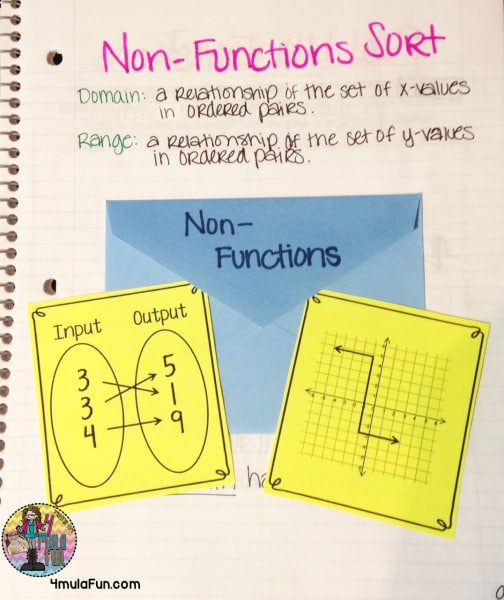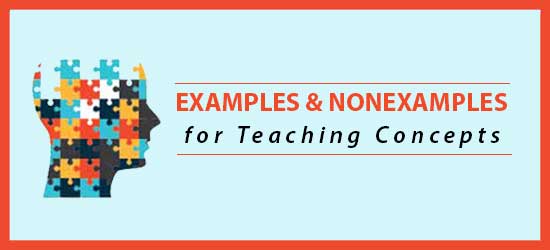So many of my students are having difficulty with two-digit subtraction. Many don’t have a good foundation in number sense or just making sense of math.
We took a look at an example and non-example type of comparison to help in our understanding of subtraction with regrouping (or crossing a ten).
Because of their lack of number sense, I’m hesitant to teach students the traditional algorithm because I want to develop students’ understanding about solving problems. Ideally, I’d like them to add or subtract within 100 mental, not using paper at all. So far, we’ve looked at how to use a number line and breaking apart the numbers.
When I presented this to students, I presented it as a problem that a lot of students had difficulty solving last year. I told the students that I students came up with two answers, 42 and 38. I purposely put the wrong answer on the left side. We read from left to right and naturally “see” that side of a paper first.
I had students share with a partner which answer they thought was correct and why it was the correct answer. When sharing whole group, we started with 42 and the students gave the answer above.
Because we started with 42, everyone thought it was the “right” answer and no one volunteered to tell me how they got 38. I mean no one. I called on a student who I knew had answered it correctly and asked him to explain his answer. He’s not so good at explaining his thinking (he’s an English learner and is great in math, but not language). Another student helped him finish up the thinking so we could scribe it.
We talked about how -57 is really -50 and -7 and how the problems is not 7 ones – 5 ones, but 5 ones – 7 ones. We also demonstrated, through the rectangles on the left hand side, how students had made new numbers when they reversed the ones place.
I showed them another way to do the problem, which we have done in class, but students couldn’t remember. I also showed students how to set up the problem and get a negative answer. I have a number line in my room that goes down to -10 just so students can use it for these purposes. None of my students do this year, but last year I had a few who did. The negative number also reinforces the idea that there are numbers below 0, a concept that upper grade teachers often struggle solidifying after years of primary math that stops at 0.
I realized after doing some work with this problem that students didn’t understanding that 93 = 80 + 13, so we did some work today on expanding two-digit numbers (which they can do) and then decomposing a ten (which they could kinda do in isolation, but not applied to subtraction). Toward the tail end of today’s work, we got to solving some subtraction problems on their whiteboards.
How do you teach students how to solve two-digit addition problems? Do you have a specific scope and sequence that you follow? Our math curriculum is horrible, so I tend to do my own thing, but it’s a lot of work and thinking time.
If you teach second grade, you might like a few pages from some of my two-digit addition and subtraction products. I’ve compiled this PDF of resources as a sampler from several different products that really emphasize all the work we do in our classroom to develop these strategies in depth.
Different components of the sampler can be used whole group or small group and are perfect for helping your students think outside the box when it comes to solving multi-digit addition and subtraction.

Every year when I begin using Frayer Models for vocabulary I have to teach what non-examples are to my students. Students are used to working in a world of creating examples and rationales behind their learning but not defining what their learning isn’t.
What is a Non-Example?
A Non-Example is simply helps define a new term in it’s entirety using the characteristics that are given and determine what the term is not.
Let’s take the word proportional…

Based on the definition and characteristics given by my students it is very easy to see that to create something that is proportional both sides must be equivalent. As you can see in creating a non-example the students created a proportion that did not become equal when cross-multiplied.
Starting lessons with examples and non-examples helps to build a foundation and clear up concepts before you get too deep into the learning. When students don’t start with a foundation of what a term or concept is they can continue to focus on that term and miss out on other key material. For my teaching this was a critical comprehension step for many of my students.
While speaking with some other teachers about using Non-Examples in their classrooms I received some great opinions.


As you can see from these teachers, as well as my experiences, using non-examples is something that we need to do in our classrooms. Non-examples don’t always have to be done in the form of a vocabulary definition. Another way to use them is through a concept sort or Venn diagram. What is one thing? What is another thing? Why is it that way? Get students talking about why they think something can be classified in one area and why not in another.


How do you use non-examples in your classroom? Do you struggle with student’s understanding of what something isn’t? Let’s discuss in the comments.
And, if you are looking for further ways to use Examples and Non-Examples in your classroom, check out the Examples and Non-Examples post over at It’s Academic Tutoring Center’s blog as they give some great insight on how using these techniques can help the foundations of learning.

Your brain likes to generalize. It forms generalizations out of individual examples, similar to fitting together the pieces of a puzzle. This is more or less how we form concepts—by grouping together things, ideas and events with shared characteristics so to classify them. It’s an efficient way to give meaning to your world.
For example, when you first saw a comic strip you most likely didn’t know the concept of “comics.” But over time, you learned that certain styles of line drawings formatted in a sequence were referred to as comics. Once you formed this concept, it became easier to classify other examples of line drawings as comics or non-comics.

Examples or instances seem to be crucial for helping a learner form accurate concepts. Otherwise, according to educational researchers, the learner can overgeneralize, under-generalize or form misconceptions. Here are six ways to help learners acquire concepts. In overgeneralization, a learner applies a rule to a concept or classifies an example to a concept when it does not apply. Their concept is too wide. In under-generalizing, a learner’s understanding of a concept is too limited. They may not think that an example is part of the concept when it is. Misconceptions involve a failure to comprehend a concept accurately.
Rule #1: Use examples in which the irrelevant attributes vary widely.
As learning designers, we can help by providing the right types of examples. Just any old examples won’t do. The attributes of the examples should vary widely, particularly on irrelevant characteristics, so learners get the right idea.
In a course on sexual harassment, if your examples only demonstrate a person harassing an individual of the opposite sex, a learner might erroneously generalize that sexual harassment cannot occur between people of the same gender. This, of course, is not true.
By varying the less relevant attributes of your examples, learners get a more refined understanding of a concept. Learners may form inaccurate concepts if the examples of the concept don’t vary widely on irrelevant attributes. This type of generalization is too narrow (Merrill & Tennyson, 1977).
Rule #2: Progress from simple to difficult examples.
It’s also important to start with simple examples at first, but progress to more complex ones later. Research shows that if a learner only sees simple instances of a concept, they will be less likely to classify the more difficult instances. This causes under-generalization (Merrill & Tennyson, 1978).
Imagine a radiologist learning about bone fractures. If the radiologist only learns how to identify the most obvious instances, in which the fragments separate completely, they will undergeneralize what a fracture is. Upon seeing a fracture in which the bone fragments are still partially joined, the radiologist could make a false diagnosis.
Rule #3: Present instances of a concept in rapid sequence or allow all instances to be viewed simultaneously.
Display examples close together in time. This enables them to be active in working memory all at once, facilitating the process of generalization. If there is a time gap between the presentation of examples, the learner might not generalize from them. So present examples in rapid sequence or leave several on the screen at one time (Gagne, 1985).
Rule#4: Use matched examples and nonexamples for concepts with related attributes.
Your brain also likes to discriminate. Discrimination restricts the range of examples we use to form a concept. To help learners form an accurate concept and to avoid overgeneralization, promote discrimination by presenting nonexamples. Nonexamples are an instance that is specifically not an example of the concept being learned. Nonexamples should vary in one attribute from the example with which it is paired.
Some research points to the fact that concepts with clearly distinguishable attributes (like texture versus color) are better taught with examples only. The learner only needs to generalize in order to acquire the concepts. But concepts that have common attributes, such as the statistical concepts of mean, median and mode, require discrimination skills and thus need matched examples and nonexamples (4). Matched examples and nonexamples should be present in working memory simultaneously.
Back on the comics theme mentioned earlier, it’s difficult to fully define the concept of comics. So a paired example and nonexample can help, because discrimination is required. The pair below demonstrates that the intent of the artist is one attribute for defining comics. The example on the left was intended to be read as a comic book. Roy Lichtenstein’s comic-based painting on the right was intended as an artwork that provided commentary on the mass media.

Rule #5: Provide opportunities for learners to generate their own examples of a concept.
If you’re working in a setting that allows learners to communicate with you and each other, ask them to generate their own examples of a concept. Promoting reflection and response in this way will reinforce well-formed concepts and correct misunderstandings. It may also clarify fuzzy areas, as not all concepts are neatly defined.
In the sexual harassment course mentioned earlier, a learner might come up with an example that asking a co-worker for a date is harassment. Others in the discussion would probably respond that this is not harassment, but that repeatedly asking the same co-worker for a date after multiple refusals might be harassment. This feedback corrects the misconception.
Rule #6: Expose learners to a wide range of examples and nonexamples and allow them to discover the concept.
We have been discovering concepts on our own since childhood. It’s a natural occurrence for a pattern-seeking brain. It’s not surprising then that an effective way to learn concepts is to discover them from interacting with a set of examples and nonexamples.
Using this inquiry strategy in eLearning isn’t quite as easy as in instructor-led training, but it can be done. It involves presenting multiple examples to the learner and inquiring about shared characteristics of the examples. Through exploration and discovery (interactive activities), learners can acquire the concept. Then use questions and context-sensitive feedback, to correct any misconceptions.
In a synchronous setting, concept formation can emerge from structured online discussions. Research seems to point to the fact that discovery learning is most effective when learners already have a developed knowledge base.
References:
- Gagne, Ellen. The Cognitive Psychology of School Learning. Brown Little, 1985.
- Merrill, M. D., & Tennyson, R. D. (1977). Concept teaching.An instructional design guide. Educational Technology.
- Merrill, M. D., & Tennyson,R . D. (1978). Concept classification and classification errors as a function of relationships between examples and non-examples. Improving Human Performance, 7, 351-364.
- Tennyson, R.D. and Cocchiarella, M.J. (1986). An Empirically Based Instructional Design Theory for Teaching Concepts. Review of Educational Research, Vol. 56, No. 1.
Get smarter about online learning with articles, tips and resources delivered to your Inbox once a month.
